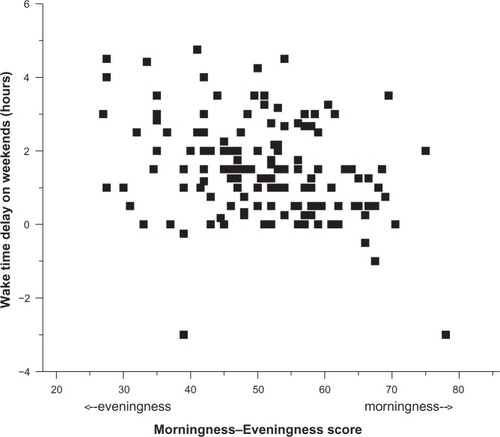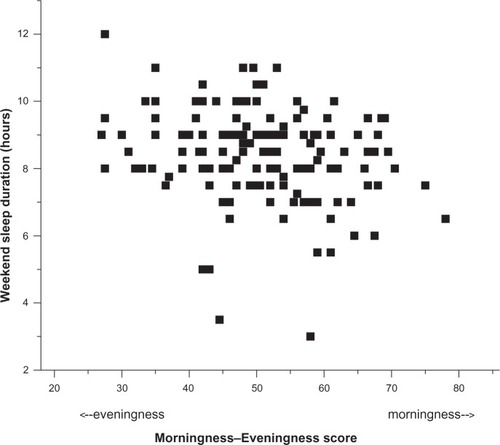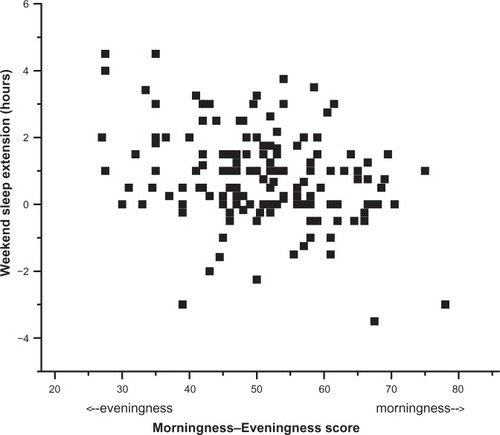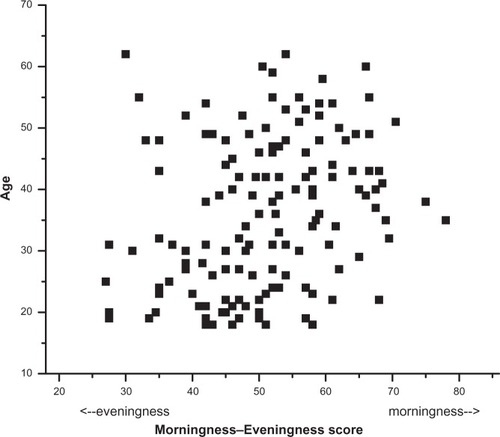Figures & data
Table 1 Demographic and study information from all participants. Average (±standard deviation) questionnaire responses from the 145 adult participants in the study are presented
Figure 1 Relationship between MEQ score and delay of waketime on weekends. The delay of waketime (in hours) between weekdays and weekends for each of the 145 participants is plotted with respect to their MEQ score. MEQ scores can range from 18 to 86, with higher numbers indicating greater morningness. Positive wake time delays indicate later weekend than weekday waketimes, while negative delays indicate earlier weekend than weekday waketimes.

Figure 2 Relationship between MEQ score and weekend sleep duration. The weekend sleep duration (in hours) calculated from self-reported weekend bedtimes and waketimes for each of the 145 participants is plotted with respect to their MEQ score. MEQ scores can range from 18 to 86, with higher numbers indicating greater morningness.

Figure 3 Relationship between MEQ score and weekend sleep extension. The extension of sleep (in hours) between weekdays and weekends calculated from self- reported weekday and weekend bed and wake for each of the 145 participants is plotted with respect to their MEQ score. MEQ scores can range from 18 to 86, with higher numbers indicating greater morningness. Positive weekend sleep extensions indicate longer weekend than weekday sleep, while negative extensions indicate shorter weekend than weekday sleep.

Figure 4 Relationship between MEQ score and age. The age (in years) for each of the 145 participants is plotted with respect to their MEQ score. MEQ scores can range from 18 to 86, with higher numbers indicating greater morningness. There was a significant association between age and MEQ score when evaluated with a mixed model (see text) and there was a significant correlation (Pearson correlation coefficient r = 0.33, P < 0.0001).

Table 2 Age-adjusted difference between subset of morning and evening types. Due to the significant difference in age between the morning and evening types in our sample, we included age in our statistical model when determining whether there were differences between the two chronotypes. The difference between evening and morning types (mean ± standard error) and the associated P value are presented. We calculated the mean value for each group by adjusting both groups to age 35 years, which was the average age of the neither type group of participants